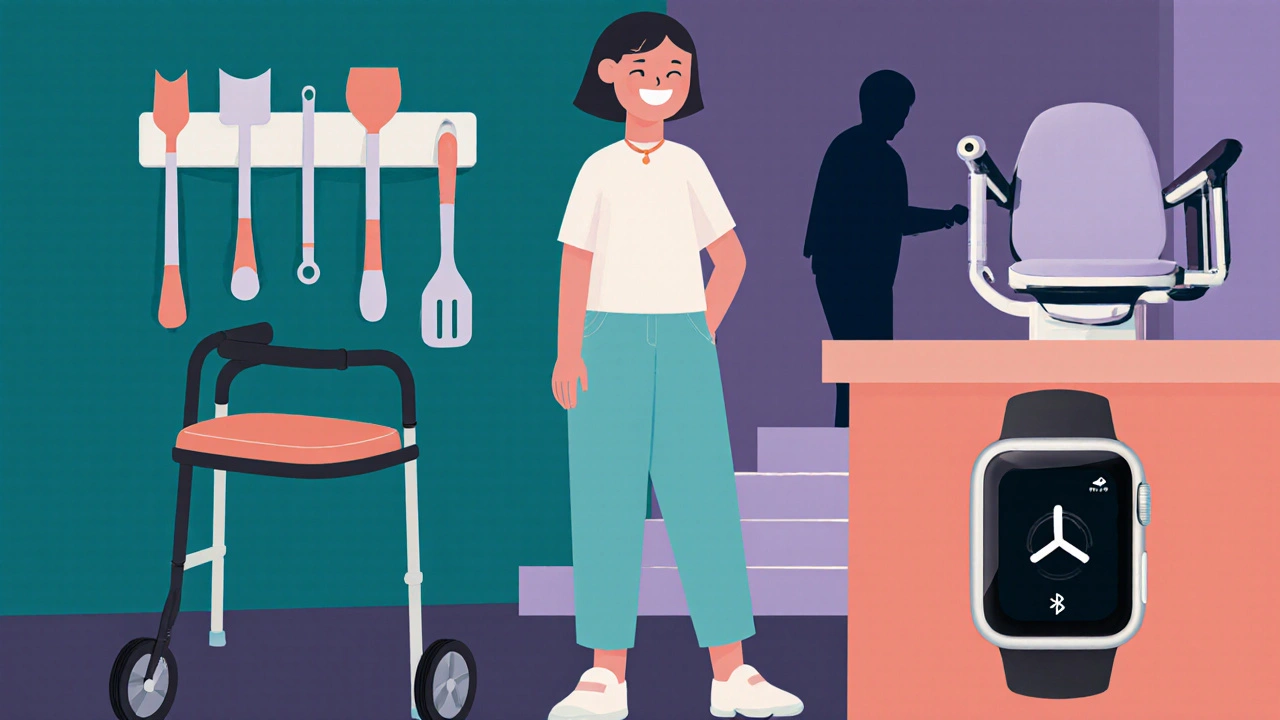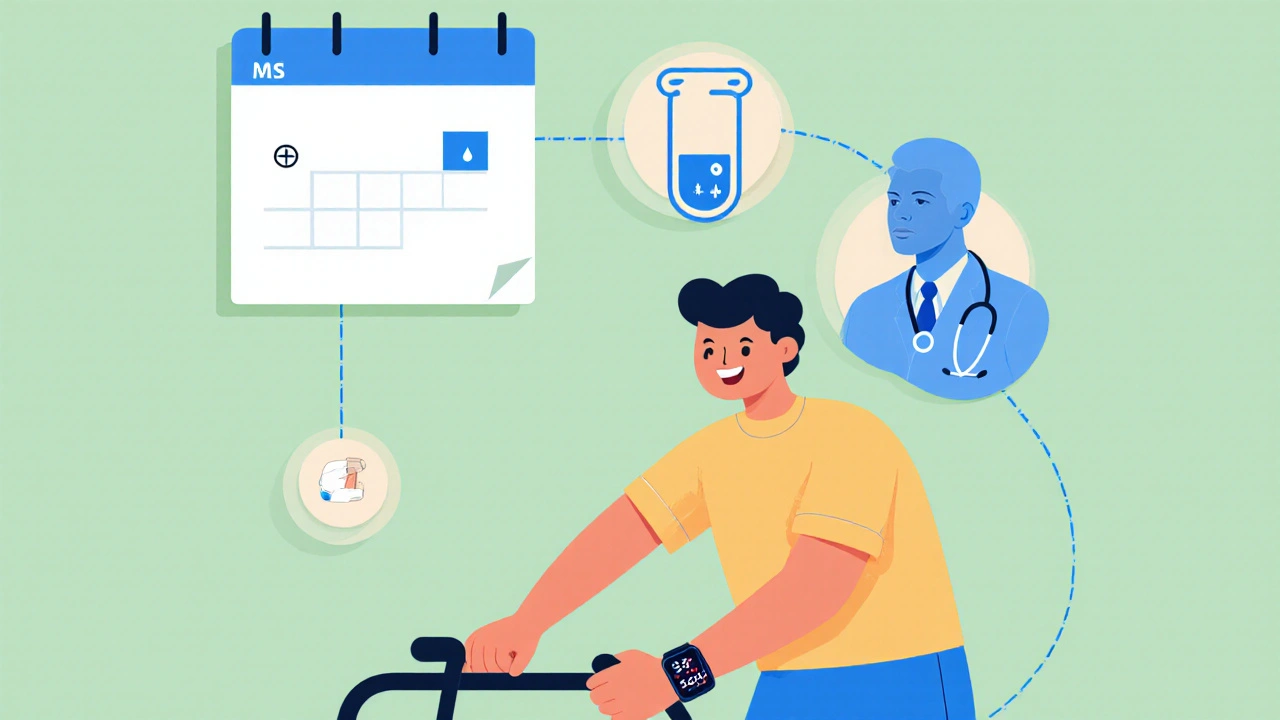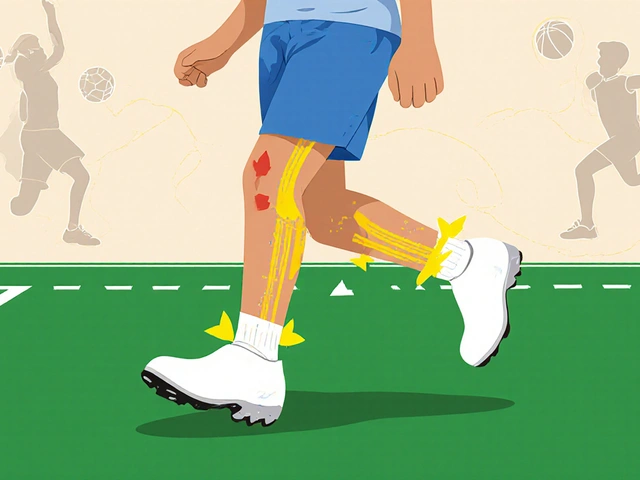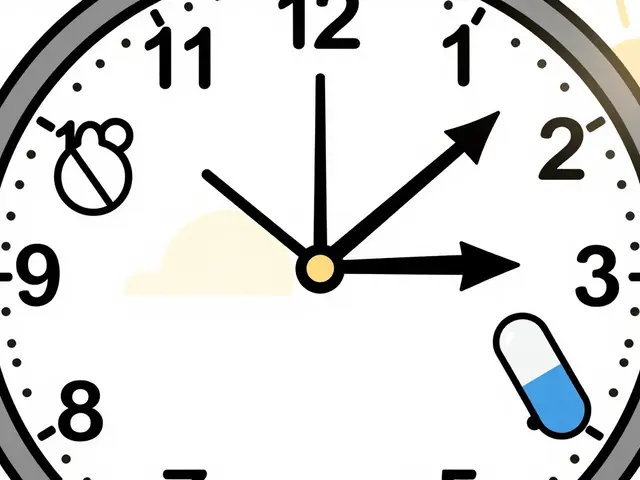MS Assistive Device Advisor
Find Your Ideal Assistive Device
Based on your symptoms and Teriflunomide treatment, we'll recommend devices to improve daily function.
How Can We Help?
Select your primary symptoms to get personalized device recommendations.
How It Works
Our tool recommends assistive devices that complement your Teriflunomide treatment based on:
- Specific symptoms ✓
- Treatment side effects ✓
- Device cost & accessibility ✓
Managing multiple sclerosis (MS) isn’t just about medication - it’s also about the everyday tools that keep you moving, speaking, and staying independent. Teriflunomide is an oral disease-modifying therapy that helps slow the immune attack on myelin, while assistive devices are the practical gadgets and modifications that bridge the gap between what your body can do and what you need to do. This guide walks through how the drug works, which aids fit different MS symptoms, and how to blend both for a smoother daily routine.
What is Teriflunomide and How Does It Work?
First approved in 2012, Teriflunomide is an oral disease-modifying therapy (DMT) that inhibits the enzyme dihydroorotate dehydrogenase, reducing the proliferation of activated T‑cells that attack myelin. By limiting this immune response, the drug can cut the number of relapses and slow disability progression for many relapsing‑remitting MS patients.
- Dosage: Typically 14 mg taken once daily with food.
- Onset of effect: Clinical benefits often appear within 6‑12 weeks.
- Monitoring: Liver function tests and blood pressure checks every 3 months.
Because it’s a pill, Teriflunomide eliminates the hassle of injections or infusions, which is a big win for people who travel or have needle aversion.
Common Side Effects and How to Manage Them
Like any medication, Teriflunomide comes with trade‑offs. The most frequent complaints are mild and can be mitigated with simple habits:
- Gastro‑intestinal upset: Take the tablet with a full glass of water and a solid meal. A short‑term probiotic can also help keep the gut calm.
- Hair thinning: This usually resolves after the first few months. If it persists, discuss dosage adjustments with your neurologist.
- Liver enzyme elevation: Regular blood work catches this early; most elevations are reversible by pausing the drug for a few weeks.
Never stop Teriflunomide abruptly without a taper plan - the drug’s long half‑life (about 2 weeks) means residues linger and can cause a rebound of disease activity.
Why Assistive Devices Matter for People with MS
MS can affect strength, coordination, vision, speech, and cognition. A well‑chosen assistive device can compensate for a specific limitation and prevent secondary issues like falls or fatigue. Think of these tools as extensions of the drug’s work - while Teriflunomide slows the disease, devices help you live with the current level of function.
Below are the main categories of assistive technology that MS patients commonly use:
- Mobility aids: canes, walkers, rollators, and powered wheelchairs.
- Upper‑extremity tools: adaptive kitchen utensils, button hooks, and reacher grabs.
- Speech and communication aids: voice amplifiers, speech‑generating devices, and Bluetooth‑enabled apps.
- Cognitive supports: reminder apps, medication organizers, and electronic planners.
- Home modification: grab bars, stair lifts, and low‑threshold shower entries.

Top 5 Assistive Devices for Everyday MS Challenges
| Device | Primary Function | Typical Cost (AUD) | Key Benefit for MS |
|---|---|---|---|
| Rollator with Seat | Walking support & rest | 300‑500 | Reduces fatigue by allowing frequent pauses. |
| Adaptive Kitchen Utensil Set | Grip assistance for cooking | 80‑150 | Minimizes hand tremor impact during meal prep. |
| Bluetooth Speech Amplifier | Voice projection | 120‑200 | Improves communication when vocal fatigue sets in. |
| Medication Reminder Smartwatch | Medication timing alerts | 250‑350 | Helps maintain adherence to Teriflunomide dosing schedule. |
| Stair Lift Kit | Vertical mobility | 4,000‑7,000 | Prevents falls and conserves energy in multi‑storey homes. |
When picking a device, consider three factors: the specific symptom you want to address, the device’s impact on energy expenditure, and how easily it integrates into your home or work environment.
Integrating Teriflunomide with Your Assistive Toolkit
Medication and equipment are most effective when they complement each other. Here’s a simple workflow you can try each month:
- Review lab results: After your blood work, note any side‑effects that could affect balance or cognition.
- Assess functional changes: Use a quick self‑check (e.g., can you walk a block without rest? Can you open a jar?)
- Adjust device settings: If fatigue spikes, raise the height of your rollator seat or add a more supportive cushion.
- Update reminder systems: Sync your medication alarm with your smartwatch’s activity tracker, so you see both dosing and step goals.
- Talk to your care team: Bring any new device experiences to your neurologist - they might adjust Teriflunomide dose or suggest a complementary therapy.
This loop keeps you proactive, turning potential setbacks into manageable adjustments.

Practical Checklist: Setting Up a MS‑Friendly Routine
- Take Teriflunomide at the same time each day, preferably with breakfast.
- Schedule blood work every 12 weeks; note dates in a wall calendar.
- Place your rollator near the bedroom and the most‑used chair to avoid extra trips.
- Keep adaptive kitchen tools in a drawer within arm’s reach.
- Test your speech amplifier before meetings; adjust volume to avoid shouting.
- Program medication reminders on a smartwatch that also tracks steps.
- Inspect grab bars and stair lifts monthly for wear and stability.
- Log any new symptoms (e.g., increased tremor) and share them with your neurologist.
Following this checklist can reduce daily friction and give you more mental space to focus on work, hobbies, or family.
Frequently Asked Questions
Can I start Teriflunomide while using a mobility aid?
Yes. Teriflunomide’s oral form doesn’t interact with canes, walkers, or powered wheelchairs. Just keep your neurologist informed about any changes in balance or gait.
Do I need to stop Teriflunomide before surgery?
Your surgeon will usually ask you to pause the drug for at least two weeks because of its long half‑life and potential effects on wound healing. A rapid‑elimination protocol with cholestyramine can be used if a quick stop is required.
What assistive device helps with hand tremors?
Weighted utensils and rocker‑style pens reduce the impact of tremor during daily tasks. For more severe cases, a powered spoon‑assist device can be attached to a regular fork.
Is fatigue a side‑effect of Teriflunomide?
Fatigue is more often a symptom of MS itself than a direct drug effect, but some people report mild tiredness during the first month. Managing sleep hygiene and using energy‑conserving devices can help.
Can a speech‑generating app replace a dedicated device?
For mild dysarthria, a tablet app with predictive text works well. Severe speech loss may still need a purpose‑built speech‑generating device that offers faster synthesis and custom voice banking.
Living with MS is a balancing act between controlling the immune system and adapting to the day‑to‑day realities of the condition. Combining Teriflunomide with the right assistive devices creates a dual‑approach strategy: the drug tackles disease progression, while the tools smooth out the practical hurdles. Keep the conversation open with your healthcare team, test new devices gradually, and adjust your routine as you learn what works best for you.







Madhav Dasari
October 19, 2025 AT 21:29Hey folks, just wanted to say that blending Teriflunomide with the right assistive gear can feel like giving yourself a secret super‑power. I’ve seen teammates who were terrified of needles suddenly thrive because the oral pill frees up mental space for everyday wins. Grab a roll‑around with a comfy seat, set your smartwatch reminder, and celebrate each tiny victory – even if it’s just getting out of bed without a wobble. Remember, the medication tackles the disease, while the devices tackle the daily grind, so treat them as teammates, not rivals. Keep experimenting, stay positive, and you’ll find a rhythm that works for you.
Christian Georg
November 2, 2025 AT 22:51Great point, Madhav! 🎉 The oral nature of Teriflunomide really does free up your schedule for tweaking assistive setups. I always schedule my blood work alerts on the same smartwatch that tracks my steps – that way I never miss a dose or a fall‑prevention reminder. Also, a quick probiotic after the pill can smooth out any gut upset, which keeps energy levels steady for using those rollators longer. If you ever need a deeper dive on device integration, just let me know – happy to share a checklist I’ve built over the years.
Caroline Keller
November 17, 2025 AT 01:12Honestly this whole assistive gadget hype is just another excuse for laziness.
dennis turcios
December 1, 2025 AT 03:34While the guide is thorough, it glosses over the financial burden many patients face when acquiring high‑end equipment. A powered wheelchair or a stair‑lift can easily run into thousands, and insurance rarely covers the full cost. Also, the suggestion to sync medication reminders with a smartwatch assumes everyone can afford one, which isn’t always the case. It would be more helpful to list low‑budget alternatives or community resources. Finally, the side‑effect management section could stress that liver monitoring isn’t just a formality – it’s crucial for long‑term safety.
Felix Chan
December 15, 2025 AT 05:55Totally get you, Dennis. There are DIY grab‑bars you can install yourself and budget‑friendly kitchen aids on sale at big‑box stores. Keep looking for local MS charities – they often loan or subsidize equipment. Stay hopeful, you’ll find options that fit both your needs and your wallet.